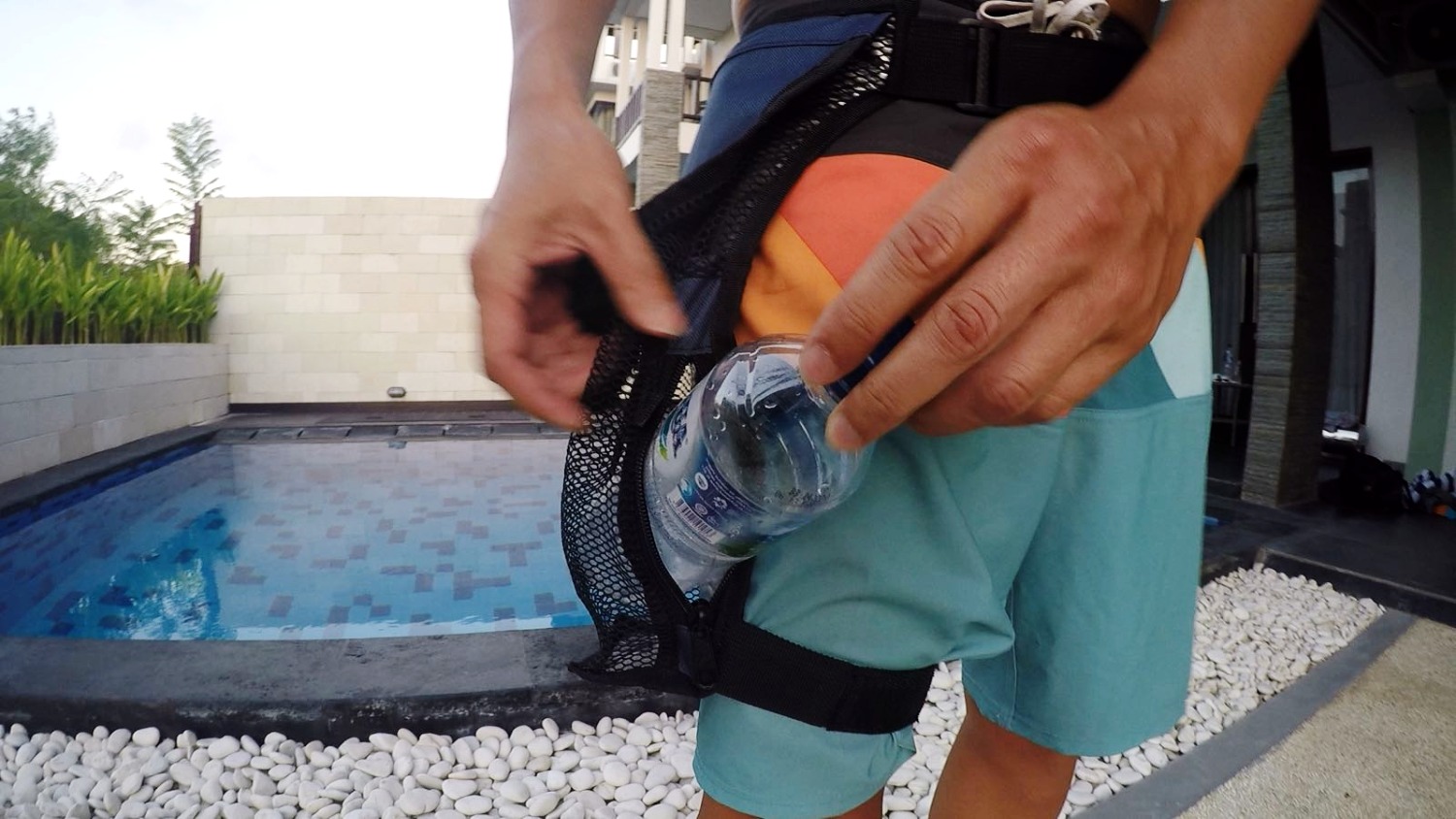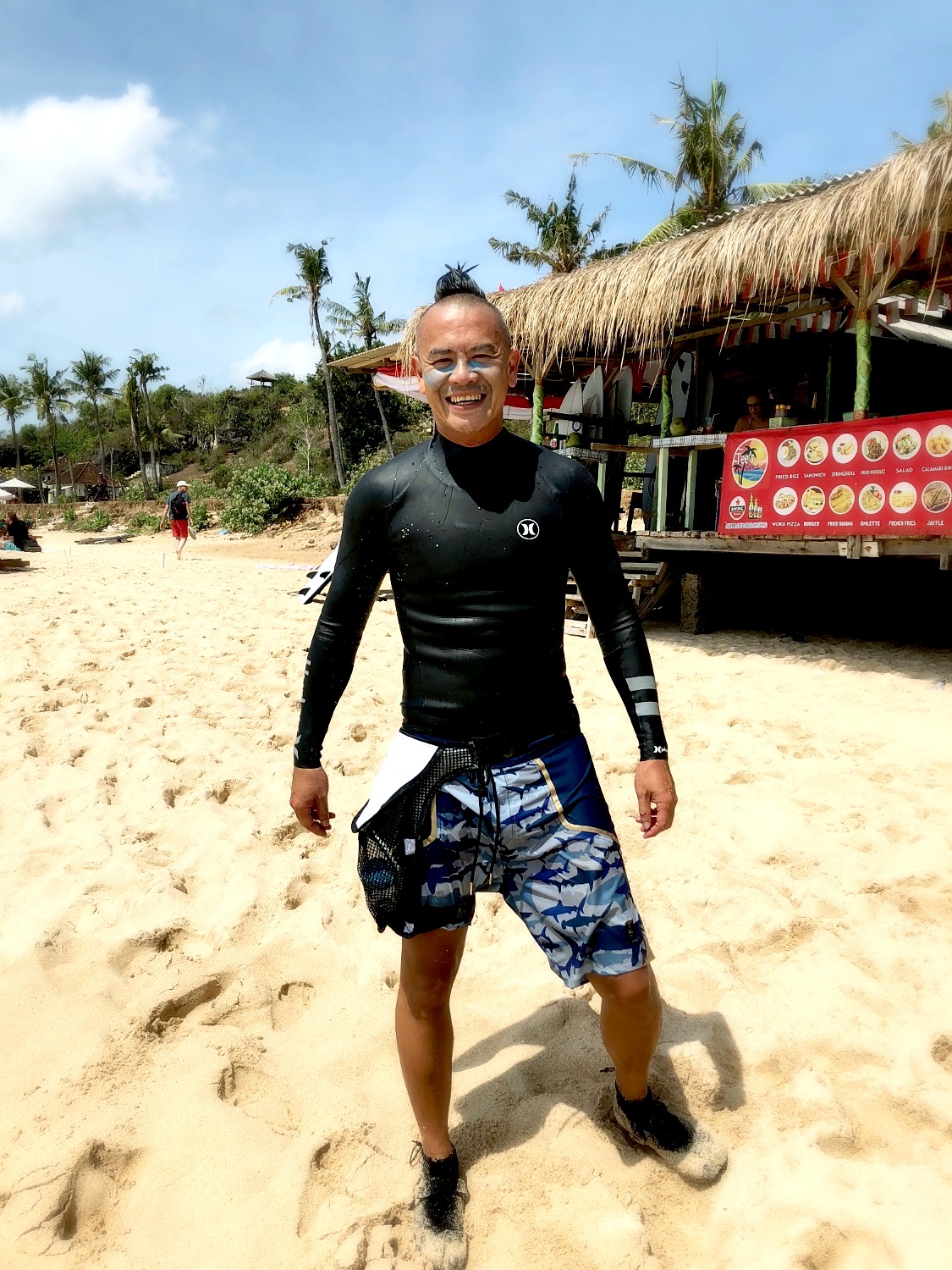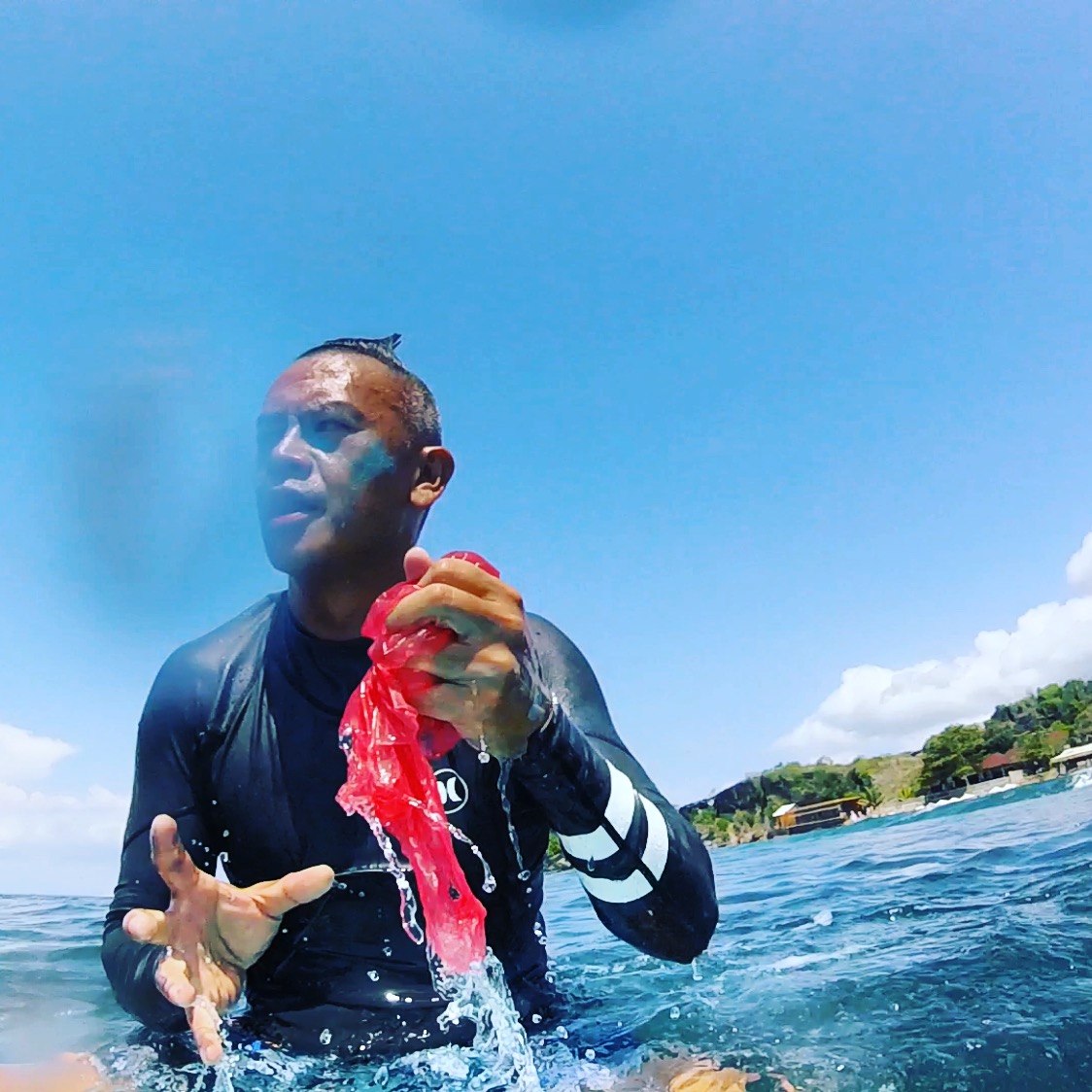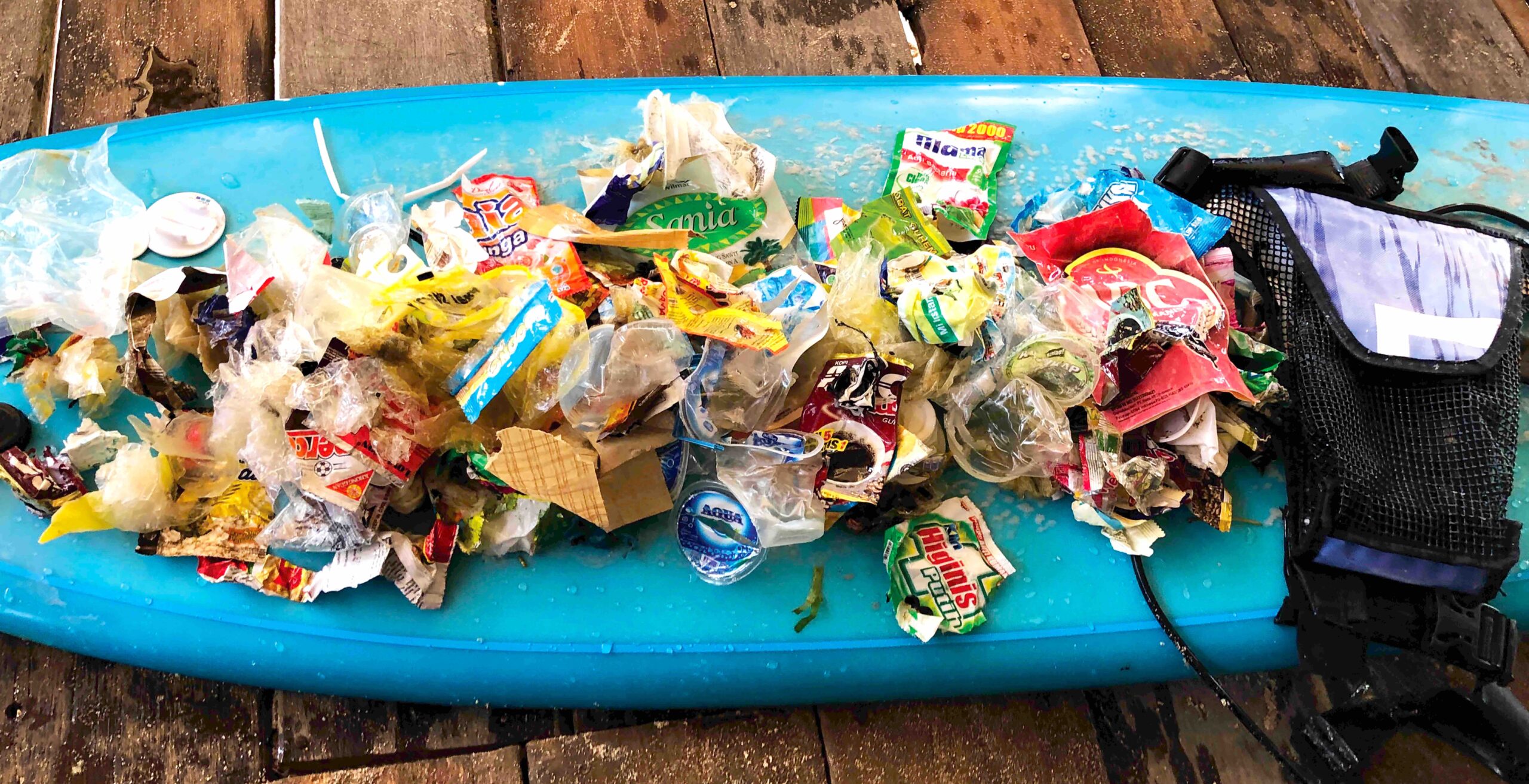
By Trieu Huynh, creator of trshbg
The trash island
Sometimes I encounter trash while surfing in Bali. It depends on the season. Rainy season causes everything to flush to the sea. Wood, trash, yes plastic too. It can be really bad. And you can’t do anything. The shock of my life was a whole trash island, the size of a football field floating by. Just very near the surfers’ line up. Trash was flocking all over the bay.
I wanted to have something to carry with me, paddle out and at least try to take it out of the water. But there wasn’t anything. As a designer, I decided to create one myself. I came up with the idea that every surfer enjoying the ocean waves, would help cleaning the ocean. A bag worn at an unobtrusive place while surfing, where users can keep collected trash. It should hold the trash inside in washing waves, it should be comfortable to wear and look good. I quickly sketched something and once in Bali, I went to my bag making friend Fauzi. He has a surf bag shop in Balangan, called Indo Waves. He made me a surf bag and a guitar bag already. He fixed my Chrome bag for free when it was broken. I showed him the sketch and gave him a bit of thinking. He said he didn’t know if he can make it. Funny enough, he said he needed something real to imagine. I just know how to do that. I told him, I would come back.
The making of a prototype
A few days later, I went back to Fauzi, Bali style, unannounced. We sat down and started to make a prototype part by part, from real materials. First the contours, then the net material. I talked him through it, but piece by piece, quick sketching, part by part. And we made each part first, before we moved on to the next. And Fauzi just made the real thing on the spot. Cut it, stitch it, improve it, check it, remove some stitches, add some, check it again and after 2 hours, it was done. The first real prototype, 100% real with all the features I imagined. It is a reality based design process. A circle of imagination and immediate execution to validate, in reality. Once we have done one piece, we did the same for the next piece.
I noticed that I shouldn’t bother Fauzi with things to come in the future. Just let him finish what he is doing now. Telling him about the next upcoming features confuses him. So, I let him focus and finish.
The day after, I go to the beach and test it.
The secret methodology at trshbg
I used my own methodology of Super adaptive for this approach. Aim, try, reflect, repeat.
1. Aim: what do we want to achieve? (5 min.)
2.Try: what do we to try to build now and let’s build it. (max 50 min.)
3. Reflect: Stop, what do we think is good and what needs to be improved? (5 min.)
4. Repeat: Next feature.
All these 4 steps are done in 1 hour.
As an innovation coach, I teach Super adaptive to innovation teams in large international corporations. We do it for speed, for reducing project waste, for better results, for being more adaptive to change and for more fun. I invented the methodology for myself first, because I wanted to be more effective, achieve the same in way less time, so I can spend more time surfing/traveling/chilling. It worked. The implementation at companies requires a workshop setting, some explicit explanation and a 2-3 weeks implementation sometimes. The methodology is fast, we do the 4 steps in 1 hour, and again and again, sometimes for up to 6 weeks, sometimes forever. It is way faster than any other project methodology I know. In 6 weeks, we have delivered the result that normally would take 6-9 months. And it removes all obsolete work like heavy paperwork and heavy documentation and long meetings with no real shippable results.
My whole life is Super adaptive. It is how I run the band, it is how I organised my way of life being half of the time in Bali and the other half in Amsterdam and wherever I need to be. Small experimentation until something is good and then scale up, is the fundament. Postponing opinions and speculation is key, we can’t predict the future, all we have is opinions and experimentation. Trying to predict the future, without shipping anything real, slows us down. If you want to delay a project, the best thing you can do is to ask for a plan. After a while, the plan comes back, then you can ask questions on the plan and ask for more detailed planning on uncertainty, another delay. What intrigues me, is that most people are not aware of that they are the delay. They think making plans is the right way to deal with uncertainty. It is not, plans are delays. And after a while, you can throw away the plans, because reality will be different anyway. The only thing you need to do instead of making plans is to try things in careful small steps and improve quickly. The best way to deal with uncertainty is to try something small and then judge. Imagine a bowl of soup, we can ask if the soup is delicious or not. We can theorize on it, do a lot of research on all soups in the world, guess what soup it is based on what we think we know and still we don’t know. Easier would be to take a nip of the soup. A small nip, because maybe it is warm to avoid burning, maybe we don’t like the taste. When we are more confident based on this experiment and we like it, we can have more of the soup. Simple common sense.
This loose way of working is in the core of trshbg. Either our campaigns, our videos, our ambassadors, our trade shows, we try to work in this way as much as we can. Scaling up, goes step by step. We started with 1, then 5, then 10, to around 1000 a month. Every time we need to scale up, we educate a few people and get a few machines. Scaling up is a routine now. Small steps are easier and less risky than big steps. And if something goes wrong, we just take a step back and try something else. Or better, we take a step forward to solve the issue.
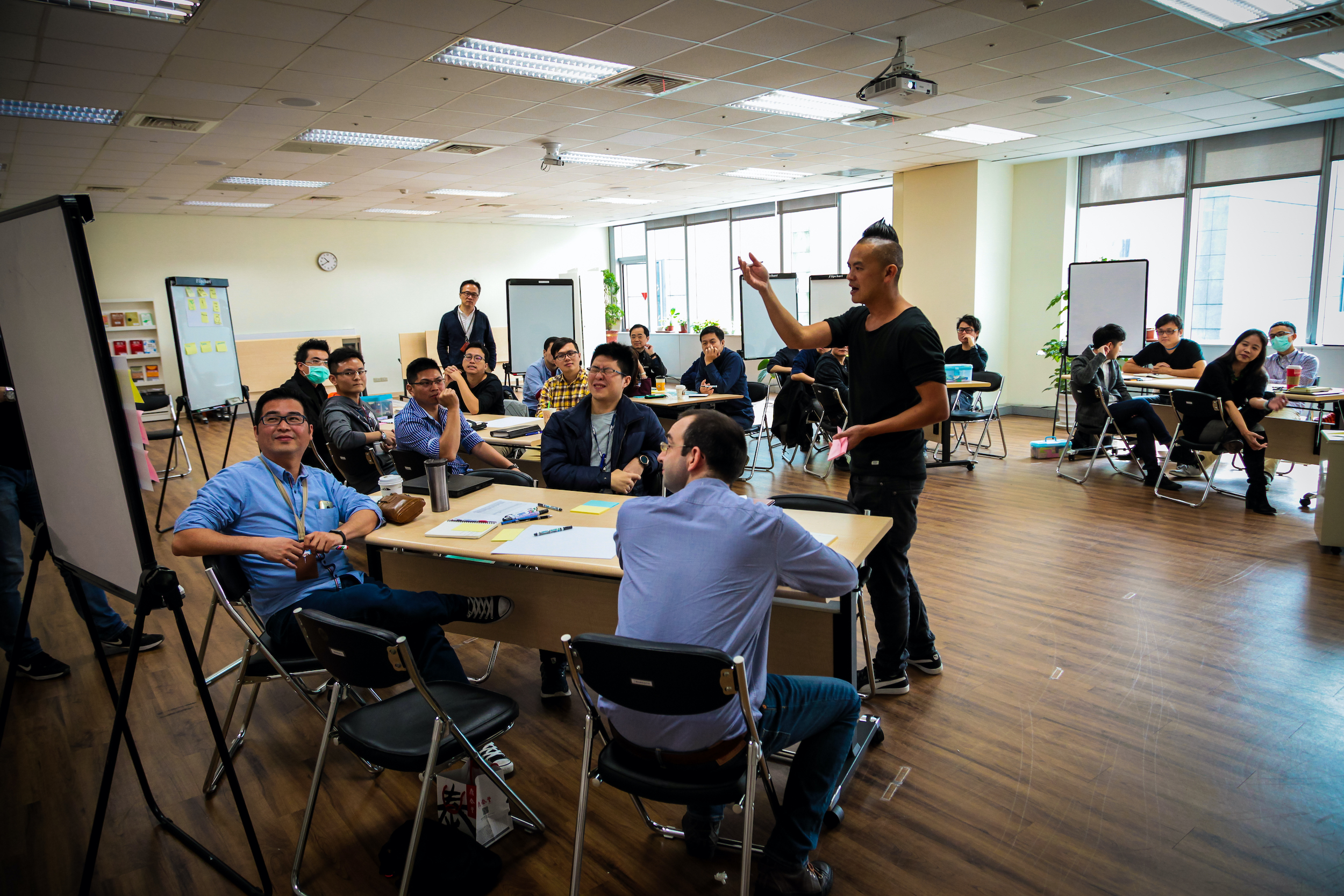
Also the core team at trshbg that makes the campaigns, does all the trade shows with custom bag making, builds the website, is trained to work like this. “What if this and this happens..?”, “Well, let’s see when it is about to happen, maybe it won’t happen at all”. We do everything “for now”, because that is what we know and we ship as much as we can. Anything we don’t know, we simply don’t know. Any product improvement, we find a solution good enough for now and ship it. Experimentation gives us answers, the rest is speculation. Anything later is later, we simply let it go and forget about it, until it becomes a priority. This saves a lot of time and makes our team effective(High value), which we find more important than being efficient(Low costs). We believe in small, short, quick incremental steps while keeping an eye on our big mission and making progress all of the time. This is why we believe that 1 piece at the time works, that one diver or one surfer more works, this is why we believe that everyday cleaning works. We clean our homes, our bodies and our streets everyday too: we clean the ocean every day, if necessary.
Another key thing with Super Adaptive is that we work together intensely like in a real team sport, on the job. Decision making: on the job. In this way, everybody knows everything, everybody has a role, without too much documentation.
Easypeasy
There is a lot of disruptive thinking in the Super adaptive way of working. With Fauzi, it is Super adaptive the stealthy way. Fauzi doesn’t know about Super adaptive, but he enjoys the creative making sessions we have together. And with his skills to build real stuff, he doesn’t bull shizz with Powerpoint presentations and just makes it. We are fast, we book results and it is fun. Simply that.
I return to Fauzi for the second generation a few days after we created the first prototype. The concept works fine in the tests, just improvements for more comfort while wearing, like padding and elastics on the straps and for more durability. I ask Fauzi, if he wants to make it by himself or if he wants me to join him. He is clear: join me! Fauzi is very Super adaptive. No, Fauzi has not been polluted by academic perfectionism that fooled us all to put everything in detailed plans, before we dare to do anything. Those plans are still uncertain anyway. Fauzi uses common sense to make something, together, immediately build it and immediately verify it. An endless process of small step by step improvements. Super adaptive is about using common sense. It is a true feast to work with Fauzi on this.
